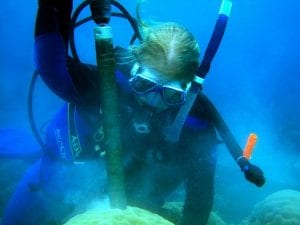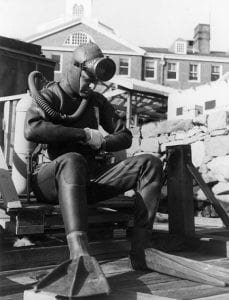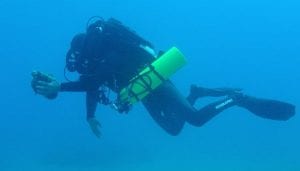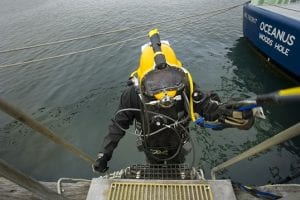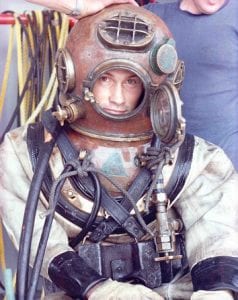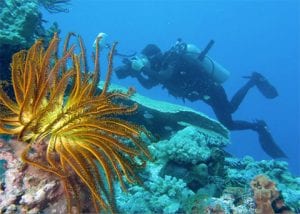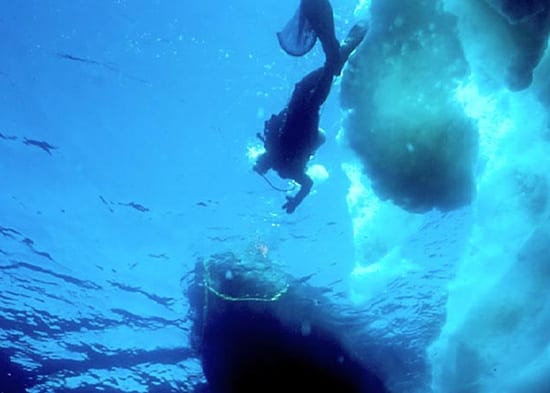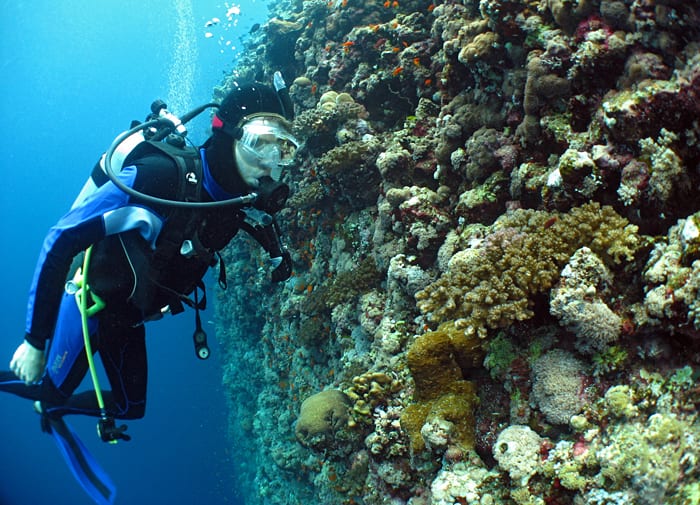Diving Program
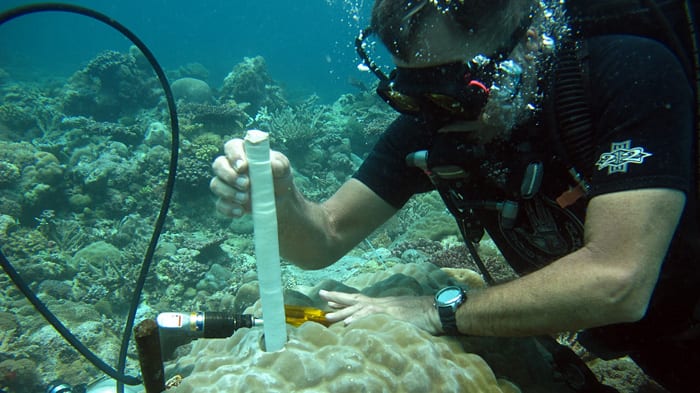
The WHOI Scientific Diving Program: 60 Years of Excellence
Diving operations at the Woods Hole Oceanographic and aboard Institution vessels are governed by the WHOI Diving Program.
The WHOI Diving Program currently supports approximately 50 divers representing all major WHOI departments. This pool of divers, a source of diving assistance for a wide range of special projects, can be contacted through the WHOI Diving Safety Officer (DSO).
Area of Operations
Global. WHOI Divers utilize a multitude of diving techniques for their operations around the world.
- Archaeology in Greece
- Climate Change & Coral in Bermuda
- Oceanography in the Arctic
- Martha's Vineyard Coastal Observatory
Capabilities
WHOI diving supports Open-Circuit SCUBA, Closed Circuit Rebreathers and Surface Supplied diving systems to meet the requirements of approved scientific missions.
The Diving Program can supply high & low pressure compressed breathing air, nitrox, scuba cylinders, weight belts, and lead weights. While visiting scientists are expected to supply the rest of their gear, a limited amount of other equipment, such as regulators, buoyancy compensators, wetsuits, small high pressure air compressors, etc. may be available with prior notification. We have a modest scuba repair facility and can repair certain brands of regulators, buoyancy compensators, visually inspect cylinders, and calibrate depth gauges.
It should be noted that WHOI does not currently have a recompression chamber.
Training
Certification is available in the following areas for persons who have a scientific need to dive: basic and advanced scuba (NAUI, AAUS), first aid (National Safety Council), cardiopulmonary resuscitation (American Heart Association), Oxygen Administration in Diving Accidents (Divers Alert Network), dry suit diving, computer diving, lightweight surface-supplied diving (Diving Systems International dive control system, Superlite helmet, KMB band mask), and open sea multiple tether diving (‘bluewater’). Prospective divers are advised that the local environment is challenging, including limited visibility (normal range 3 feet to 12 feet, extremes from 0 feet to 25 feet), currents (normal maximum current off the Institution pier is 1.5 knots, may be >3.5 knots in Vineyard Sound), a wide seasonal temperature variation (ocean range 28 degrees F in winter to 77 degrees F in summer, air range -10 to 90 Fahrenheit), and seasonally heavy boat traffic.
Rules and regulations concerning diving policy are developed, interpreted, and reviewed by the Diving Control Board (DCB), which is comprised of the Institution Safety Officer, six experienced scientific divers, and the DSO. The DSO has operational authority for the Diving Program and is responsible for the enforcement of diving safety regulations, conduct of diver training, approval of dive plans and equipment, the compiling and storage of diving-related records and information, and the maintenance of Institution-owned diving gear.
Divers must be authorized by the Institution’s DSO or DCB before commencing any diving operations under WHOI auspices. WHOI is an organizational member of the American Academy of Underwater Sciences. For information specific to diving operations from WHOI research vessels, see the Shipboard Diving section.
Contacts
Ed O'Brien
Diving Safety Officer
Phone: (508) 289-2239
Fax: (508) 457-2195
eobrien@whoi.edu
David Fisichella
Shipboard Scientific Services Group (SSSG)
Phone: (508)-289-3777
dfisichella@whoi.edu
Related Files
WHOI Diving Safety Manual
(pdf format)
Multimedia
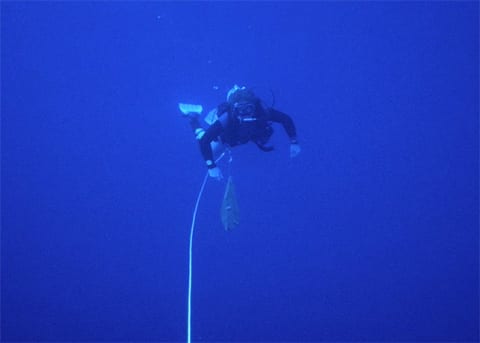
Video: Blue Water Diving
Diving in the open ocean. This video describes a specialized diving technique that lets biologists study the ocean's most fragile beings—soft, transparent animals such as jellyfish that are crushed by traditional tools such as plankton nets. Scientists had to find a way to spend time where these gelatinous animals live—inside the bottomless blue open ocean, drifting with the plankton.
Video: Cold Water Diving
An audio slideshow on going to extremes for research. This video shows the focus needed to do scientific work in cold water. The gear is bulkier and heavier, cold affects dexterity and capacity, and dives must be shorter to compensate yet still get the job done. Scientific divers work in winter, in the high latitudes, or in the Arctic or Antarctic. They collect or handle animals, do experiments, or perform maintenance on submerged equipment—work requiring caution and experience.
From Oceanus Magazine

Sometimes using instruments to observe the ocean remotely just isn't enough and scientists need to get their hands and eyes directly into the environment they are exploring.

Coral reefs are among the most vibrant and valuable ecosystems on the planet, but they are threatened by climate changes, ocean acidification, and pollution.

Coral skeletons reveal some bare bones facts of climate change

